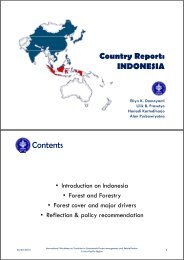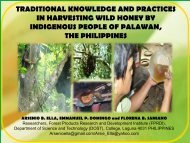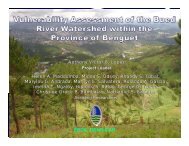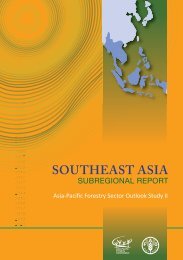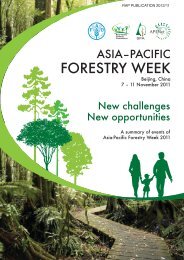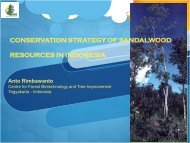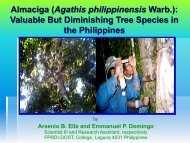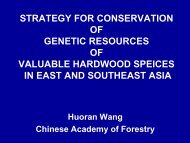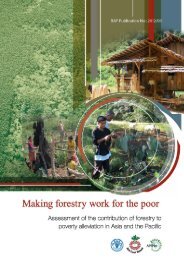Community guidelines for accessing forestry voluntary carbon ... - FAO
Community guidelines for accessing forestry voluntary carbon ... - FAO
Community guidelines for accessing forestry voluntary carbon ... - FAO
You also want an ePaper? Increase the reach of your titles
YUMPU automatically turns print PDFs into web optimized ePapers that Google loves.
<strong>Community</strong> <strong>guidelines</strong> <strong>for</strong> <strong>accessing</strong> <strong>for</strong>estry <strong>voluntary</strong> <strong>carbon</strong> markets<br />
1.5 Forests and climate change mitigation<br />
What kinds of <strong>for</strong>estry activities can make a<br />
difference?<br />
‘Think global, act local’ became a slogan of sustainable development<br />
initiatives after the Rio Earth Summit of 1992. This means that all ef<strong>for</strong>ts<br />
matter, no matter how small in scale. One of the most important effects<br />
of successful large-scale projects and programmes is the facilitation<br />
of individual actions; they make it easier <strong>for</strong> ‘ordinary’ people to have<br />
a positive impact on the world around them. If enough people make<br />
changes in their own lives, we will end up with the significant and<br />
sustainable changes that we need at the global scale.<br />
Working together to have an impact<br />
In many developing countries, rural communities look after <strong>for</strong>ests that<br />
would otherwise be degraded or removed. An analysis conducted by the<br />
Kyoto – Think Global, Act Local (KTGAL) Project 10 found that local <strong>for</strong>est<br />
management was often more effective than centralized management in<br />
reducing degradation and enhancing <strong>for</strong>est <strong>carbon</strong> stocks. This means<br />
that community-based <strong>for</strong>est management (CBFM or ‘community<br />
<strong>for</strong>estry’, see Glossary) prevents <strong>carbon</strong> emissions by reducing the rate<br />
of de<strong>for</strong>estation and degradation, and helping the <strong>for</strong>est to regenerate.<br />
10 See www.community<strong>carbon</strong><strong>for</strong>estry.org <strong>for</strong> more details of the K-TGAL project<br />
28




